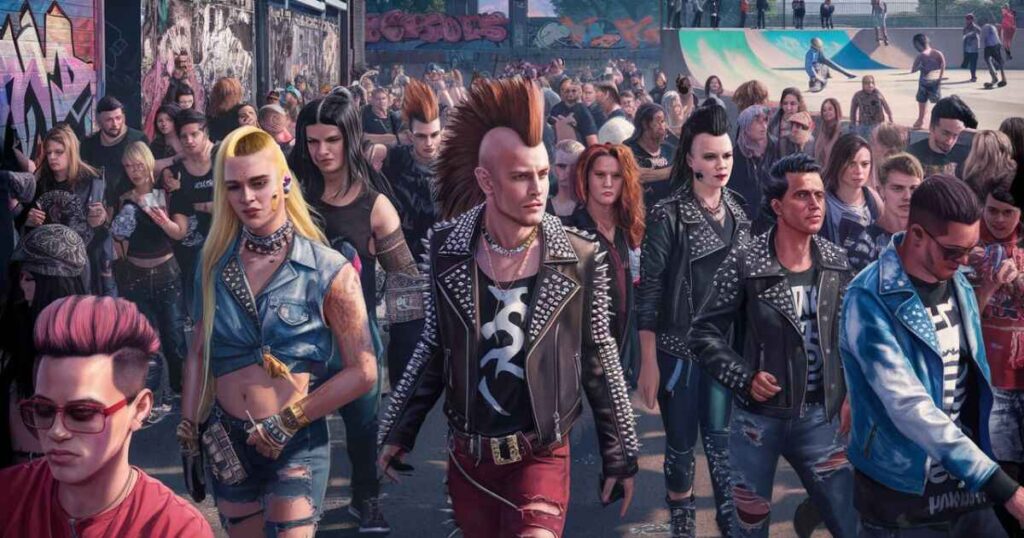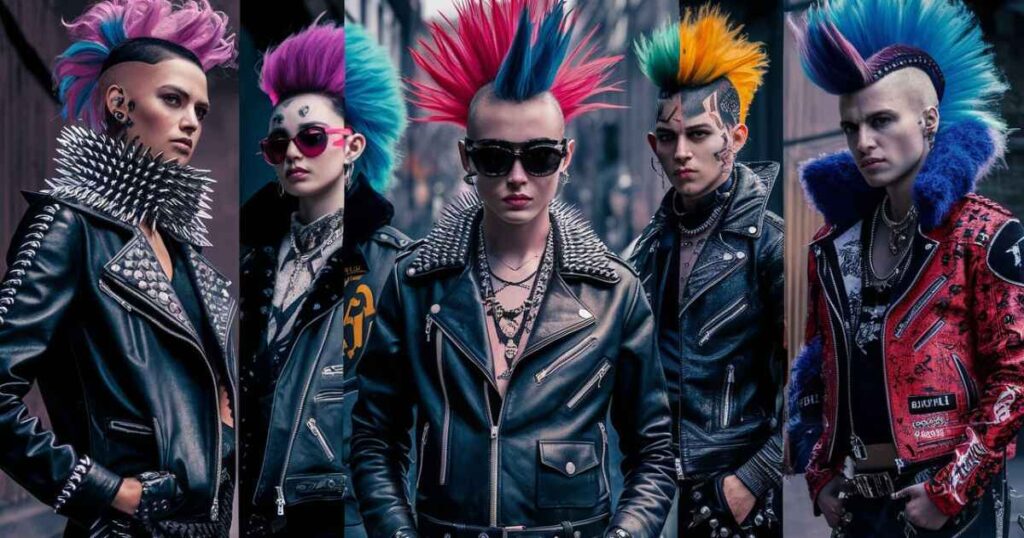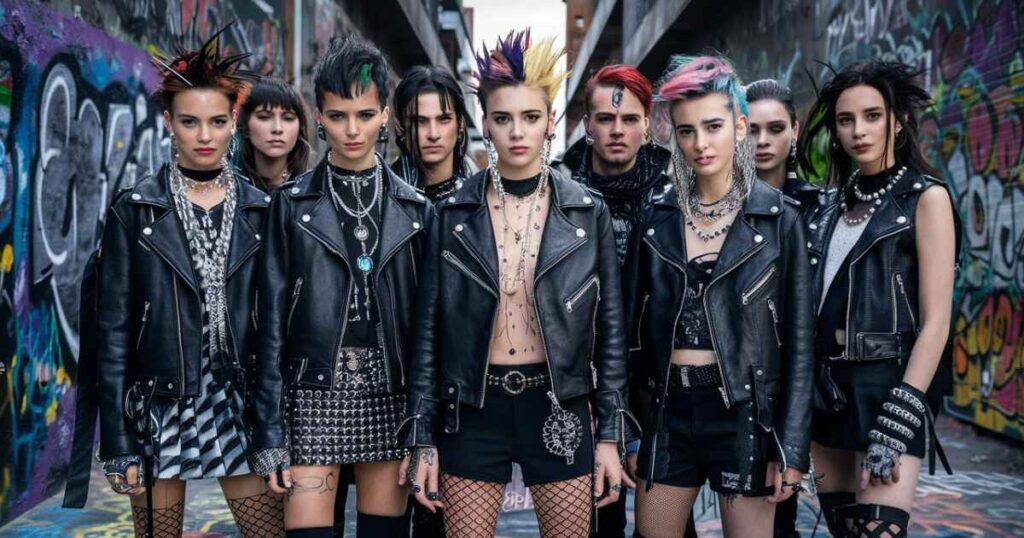The question “Are fashion punks real punks?” has been a contentious issue within the punk community for decades.
As punk aesthetics have been increasingly adopted by mainstream fashion, the line between authentic punk culture and its commercialized counterpart has become increasingly blurred.
This article delves deep into the debate, examining the origins of punk, the rise of fashion punks, and the complex relationship between style and substance in punk culture.
The Origins of Punk Culture
To understand the debate surrounding fashion punks, it’s crucial to examine the roots of punk culture.
Birth of punk in the 1970s
Punk emerged in the mid-1970s as a rebellious response to the social and economic climate of the time. Born in the streets of London and New York, punk was characterized by its raw energy, DIY ethos, and anti-establishment attitude. Bands like the Sex Pistols, The Clash, and The Ramones laid the foundation for a movement that would go on to influence music, fashion, and culture for decades to come.
Core values and ideologies of punk
At its heart, punk was about more than just music and fashion. It represented a set of core values that included:
- Nonconformity and rejection of mainstream society
- Anti-authoritarianism and questioning of established power structures
- Individual freedom and self-expression
- DIY (Do It Yourself) culture and creativity
- Social and political awareness
These values were not just abstract concepts but were actively lived and promoted by punk communities.
Traditional punk fashion and its significance
Punk fashion was an integral part of the movement from the beginning. It was characterized by:
- Leather jackets
- Ripped clothing
- Safety pins and studs
- Mohawks and unconventional hairstyles
- Band t-shirts and patches
Importantly, punk fashion was not just about looking different. It was a form of visual rebellion, a way to shock society and challenge conventional norms. The DIY aspect was crucial – punks often created or modified their own clothing, rejecting mass-produced fashion in favor of individual expression.
The Emergence of Fashion Punks
As punk gained visibility, its aesthetic began to influence mainstream fashion, leading to the phenomenon of “fashion punks.”
Mainstream adoption of punk aesthetics

By the 1980s and 1990s, elements of punk style were being incorporated into mainstream fashion. Designers began to draw inspiration from punk, creating high-end versions of punk staples. This trend has continued into the present day, with punk-inspired fashion regularly appearing on runways and in high street stores.
High-fashion interpretations of punk style
Fashion designers have frequently drawn inspiration from punk aesthetics. Some notable examples include:
| Designer/Brand | Punk-Inspired Collection |
| Vivienne Westwood | Consistently incorporates punk elements |
| Alexander McQueen | “Highland Rape” (1995) |
| Versace | “Punk Revival” (1994) |
| Jean Paul Gaultier | Various punk-inspired collections |
| Comme des Garçons | Punk-influenced designs |
These high-fashion interpretations often retain the visual elements of punk while removing much of the original context and meaning.
The commodification of punk culture
As punk aesthetics became more mainstream, many argue that the culture became commodified. Punk-style clothing and accessories became available in shopping malls, and punk music was commercialized and played on mainstream radio. This led to the emergence of “fashion punks” – individuals who adopt punk style without necessarily embracing punk ideology or participating in punk subculture.
Arguments Against Fashion Punks as Real Punks
Many within the punk community argue strongly that fashion punks cannot be considered real punks.
Lack of ideological commitment
One of the primary arguments against fashion punks is that they lack the ideological commitment that is central to punk culture. Critics argue that wearing punk clothing without embracing punk values is a form of cultural appropriation. They contend that real punks live their beliefs, engaging in activism, supporting independent music and art, and actively challenging societal norms.
Also Read: What Is the Difference Between Emo and Goth Fashion?
Commercialization vs. DIY ethic
The DIY ethic is fundamental to punk culture. Traditional punks often create their own clothing, music, and art, rejecting mass-produced consumer culture. Fashion punks, by contrast, often purchase pre-made “punk” clothing from mainstream retailers. This is seen by many as a betrayal of punk’s anti-consumerist stance.
Authenticity concerns in punk communities
Many punk communities are deeply concerned with authenticity. They argue that fashion punks dilute the meaning of punk, turning a subversive subculture into a mere fashion trend. This can lead to gatekeeping within punk scenes, with long-time punks questioning the credentials of newcomers who they perceive as inauthentic.
Arguments Supporting Fashion Punks as Real Punks
Despite the criticism, there are also arguments in favor of considering fashion punks as part of the broader punk community.
Evolution and diversity within punk culture
Punk has always been a diverse and evolving culture. From its inception, punk has incorporated various subgenres and styles. Supporters of fashion punks argue that this is simply another evolution of punk culture, adapting to new social contexts.
Fashion as a gateway to punk ideology
Some argue that fashion can serve as an entry point to punk culture. Someone might initially be attracted to punk aesthetics, but through this interest, they may discover punk music, literature, and ideology. In this view, fashion punks represent potential new members of the punk community.
Redefining punk in the modern era
As society changes, so too must subcultures. Advocates for a more inclusive definition of punk argue that in the internet age, strict definitions of authenticity are outdated. They contend that punk should be about the spirit of rebellion and individuality, regardless of how it’s expressed.
The Impact of Fashion Punks on Punk Culture

The rise of fashion punks has had a significant impact on punk culture as a whole.
Increased visibility and mainstream acceptance
Fashion punks have undoubtedly increased the visibility of punk aesthetics in mainstream culture. This has led to greater acceptance of alternative styles and has made it easier for people to express themselves through fashion.
Dilution of punk’s original message
However, this increased visibility has come at a cost. Many argue that as punk style has become more mainstream, its original message of rebellion and nonconformity has been diluted. The danger is that punk becomes just another fashion trend, stripped of its political and social significance.
New interpretations and expressions of punk identity
The debate over fashion punks has also led to new interpretations of what it means to be punk. Some argue for a more inclusive definition that focuses on the spirit of punk rather than strict adherence to a particular style or set of behaviors.
Bridging the Gap: Can Fashion Punks and Traditional Punks Coexist?
Despite the heated debate, there may be ways for fashion punks and traditional punks to find common ground.
Finding common ground in punk values
While they may express it differently, both fashion punks and traditional punks often share a desire for self-expression and a rejection of societal norms. Focusing on these shared values could help bridge the divide.
The importance of education and respect
Education is key to bridging the gap. Fashion punks could benefit from learning about the history and ideology of punk culture, while traditional punks might consider being more open to new interpretations of punk identity.
Embracing diversity within the punk community
Ultimately, embracing diversity may be the key to the continued relevance of punk culture. By welcoming different expressions of punk identity, the community can remain vibrant and evolving.
Conclusion
The debate over whether fashion punks are real punks is likely to continue for as long as punk culture exists. While there are valid arguments on both sides, it’s clear that punk culture, like all subcultures, is constantly evolving.
As we consider the question “Are fashion punks real punks?”, perhaps the most punk response is to reject rigid categorizations altogether and embrace the diversity of expressions within the punk community.
FAQs About Fashion Punks and Real Punks
What defines a “real” punk?
There’s no universally agreed-upon definition, but traditionally, a “real” punk is someone who not only adopts punk fashion but also embraces punk ideology, participates in punk subculture, and lives according to punk values.
Can someone be a fashion punk and a real punk simultaneously?
It’s possible. Someone might be drawn to punk fashion initially but then become more deeply involved in punk culture and ideology over time.
How has the internet affected the fashion punk vs. real punk debate?
The internet has both intensified the debate and blurred the lines further. It’s made punk fashion more accessible but has also provided platforms for punk communities to discuss and defend their culture.
Are there different levels of authenticity within punk culture?
Many punks would argue that authenticity isn’t about levels, but about commitment to punk values and active participation in punk culture.
How can fashion punks gain acceptance in traditional punk communities?
By showing genuine interest in punk music and culture, embracing the DIY ethic, and demonstrating a commitment to punk values beyond just fashion choices.

Ella Marie is a dedicated fashion enthusiast committed to curating the latest trends and timeless styles. With a keen eye for detail and a passion for elegance, they ensure every visitor finds inspiration and sophistication on the site.








